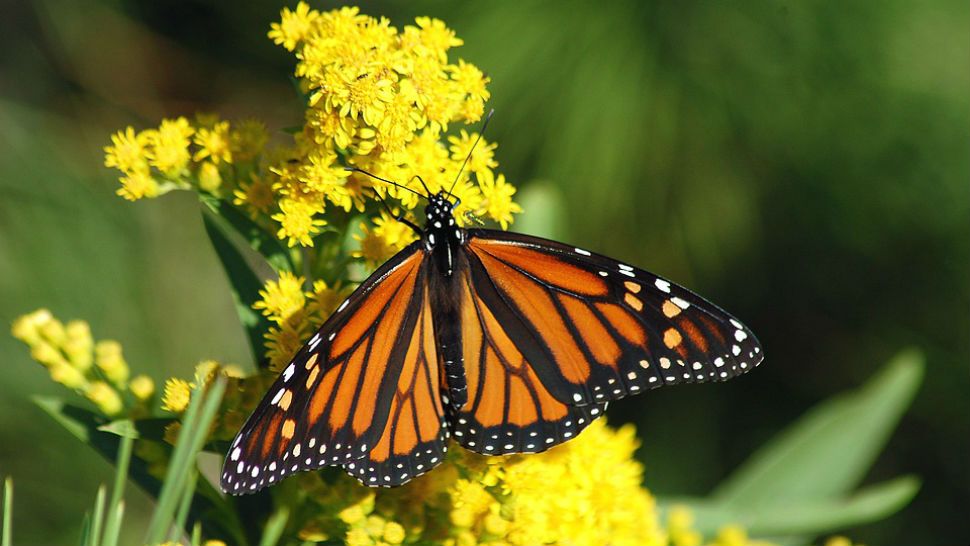TEXAS — Locally, the weather is changing with the arrival of the fall season, and across the world a number of natural events are also happening to plants and animals.
Food and comfortable temperatures are considered highly motivating factors for most people, but especially so for migratory animals and insects. This includes the monarch butterfly.
The monarch butterfly is like a migratory bird. Both have evolved to travel long distances to escape the winter cold and the lack of food. The signal for this long journey? Shorter days and cooler temperatures.
Where do the butterflies go? According to Texas Parks and Wildlife, they're funneling into Texas from Canada and the northern U.S., and will end up in nine high mountain sites in the fir forests of Central Mexico.
They arrive by November and will stick around until March. Then, it's another trip back to Texas and the southern U.S. to lay eggs on newly sprouted milkweed. By early June, they have reached the northern U.S. and Canada where they'll stay and breed during the summer.
The monarchs' semi-annual Texas fly-by is just a small part of a 3,000+ mile journey! Something to think about when you see one fly by this month.
LINK: Monarch Butterfly Migration Map
Why the Lone Star State? Texas is important to the monarch butterflies because of location. It's situated right between the principal breeding grounds in the north and the overwintering areas in Mexico.
During the fall, monarchs use two flyways in Texas. The first is a 300-mile path from Wichita Falls to Eagle Pass. Monarchs will enter this flyway in late September, and by the third week of October, and most have passed through into Mexico. The second flyway is located along the Texas coast and lasts from the late October to the middle of November.
In selected areas, monarchs have been seen in migration in huge numbers. We're talking about tens of thousands! Talk about a photo opportunity.
A warming climate is a concern for the monarch butterfly. According to the U.S. Fish & Wildlife Service, the monarch is highly sensitive to weather and climate because they depend on temperature cues to trigger reproduction, migration and hibernation. Dependence on milkweed alone as a host plant is also a vulnerability because there is a decline throughout the monarch range.
Urbanization and more extreme weather events are also contributors impacting the future of the monarch butterfly.
Try planting these seven flowers that butterflies love. It can help the monarchs out during their journey through Texas.



